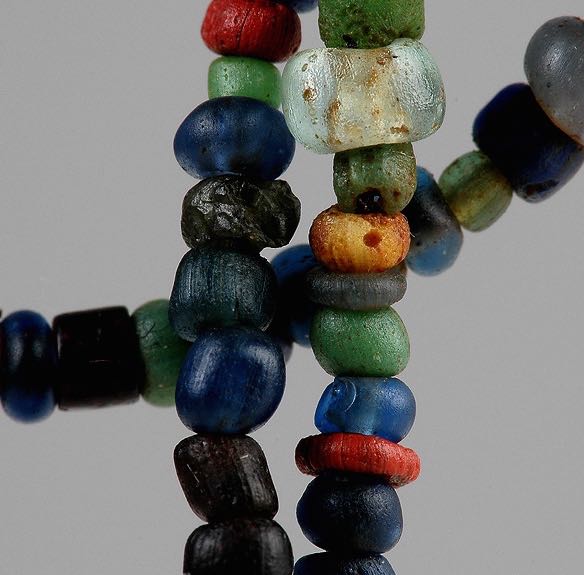| Tentative answer 3 - Java | |||||
| Re: What were the shops like where the treasured ancient beads of today were produced? -- art | Post Reply | Edit | Forum | Where am I? | |
03/17/2017, 15:24:11
Okay, now my third example, different again.
We all know about trade wind beads, or Indo-Pacific beads as Peter Francis chose to call them: they were produced from the fourth century BCE to at least the twelfth century CE and possibly beyond, at at least nine - and quite probably several more - production sites around the south-eastern Indian ocean. They were the most widely traded beads in the world until the height of Venetian production in the nineteenth century, and they occur in large quantities in a great many different cultures from West Africa to Japan. They are commonplace and I love them for their commonplaceness. Every time I pick up a strand I imagine the sheer wonder they generated in the people who first saw them.
Why were they produced (unlike, say, Venetian beads) in so many different places? Well, sea trade was dangerous in those times, particularly in that part of the world, so we have our first example in ancient times of a widely and successfully decentralized production network - perhaps even a kind of franchise system. The beads vary in size and there is a range of glass and colourants, but the pleasure they give lies in their uniformity not their variety. Peter Francis believed that they were produced in workshops run by expatriate south Indian craftsmen (lower caste men with no social standing), and though there is no evidence for that assumption, it seems quite likely. The makers were probably controlled by the businessmen who controlled the trading networks.
At the same time, they influenced the drawn-bead-making technology of beads that were produced much further east in the eastern tip of Java. These jatims were clearly entirely different in their social function from Indo-Pacific beads and tied much more to a local market and culture. They were luxury goods, as they were also in the countries to which they were exported, not only because of their size and ostentation; beads that are extremely difficult to make and require expensive, rare raw materials cannot be mass-market products. We know virtually nothing about the culture that somehow enabled their production, but I would guess that their makers were treated with substantial respect, particularly if the beads were associated with religious practices.
Images: Indo Pacific beads; very large Jatim pelangi (41mm) with devitrified, crackled surface and old root growth adhering to the cracks.


All rights reserved by Bead Collector Network and its users